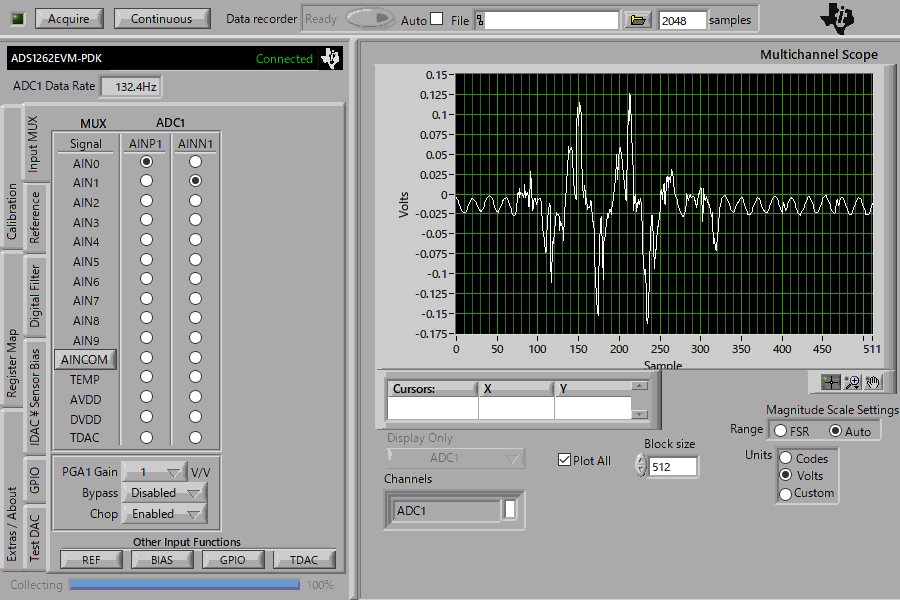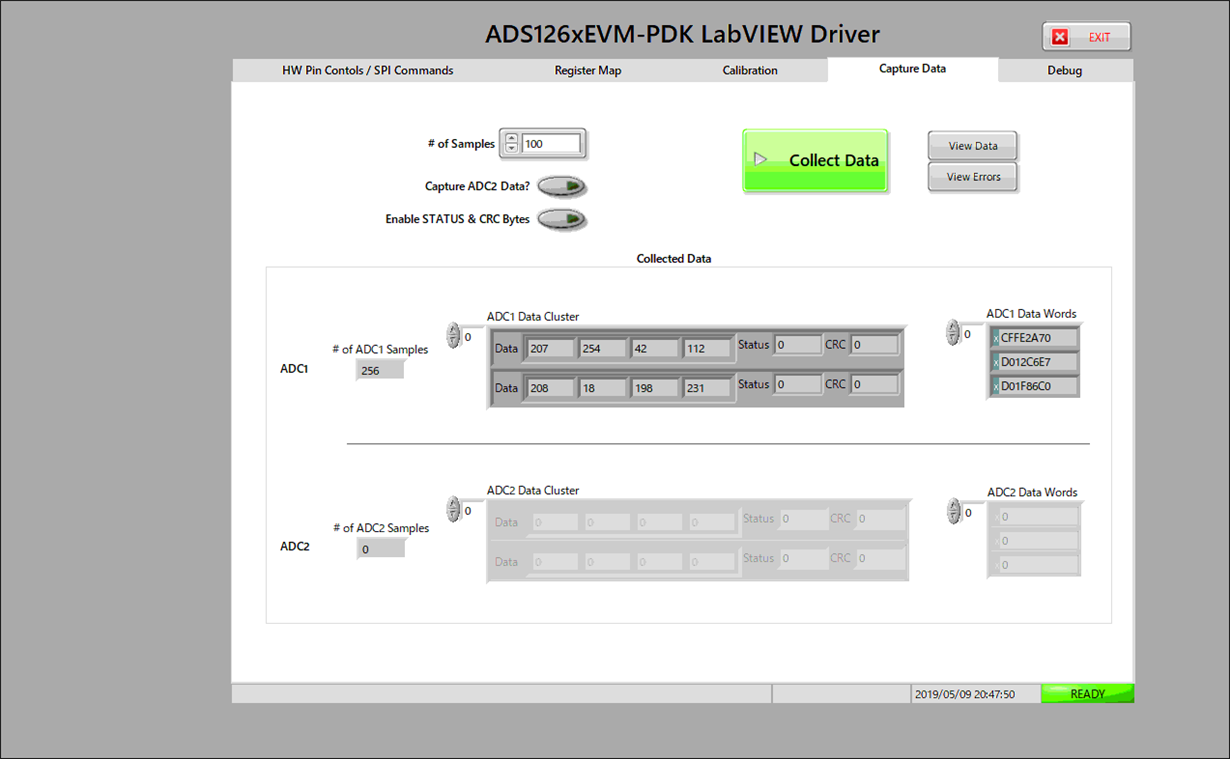Part Number: ADS1262EVM-PDK
I want to collect data in LabVIEW using ADS126xEVM-PDK. Data want to record the output of the vibration acceleration sensor in sampling rate of around 200Hz. However, I do not understand a control method of the hardware on LabVIEW.
Under the present conditions, it is in following states.
1. I can acquire the data using ADCPro.
2. I can acquire data by the sample program of LabVIEW.
3. I can be connected to the hardware by my program of LabVIEW, but do not understand the note method of the register and the transmission method of the command.
Is there any good method? I am happy if you can show me it. Thank you in advance for your help.



